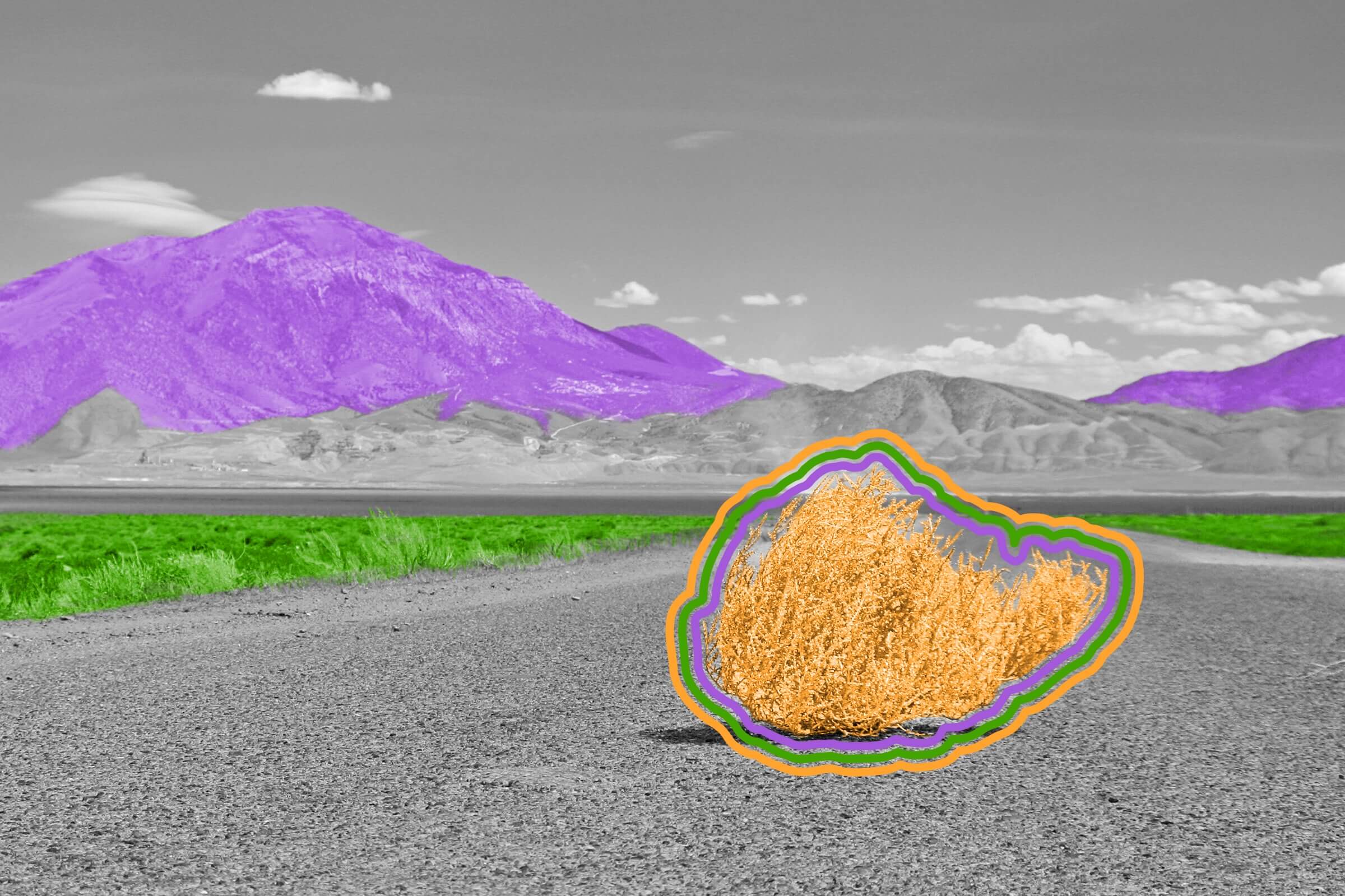
The iconic tumbleweed of the West is not native to North America.
Watching an old Western might leave you with the perception that tumbleweeds have always been a part of America’s Western landscape. However, many of the spiky bushes are actually an invasive species from Russia. Salsola tragus goes by a variety of names — including “Russian thistle” and “wind witch” — but its best-known title comes from the way the plant breaks free from the ground at the end of its growing season, blowing around and spreading hundreds of thousands of seeds. While some native tumbleweeds do exist — like Amaranthus albus, aka common tumbleweed — Russian thistle is highly invasive, a term scientists use to describe species that choke out native plants and cause ecological harm by altering habitats. Today, Russian thistle is the most common type of tumbleweed in California.
Botanists believe Russian thistle first put down roots in South Dakota around 1873, accidentally mixed into containers of flaxseed brought with European immigrants and growing unchecked in arid, desolate regions because it requires minimal water. Russian thistle gained such a stronghold in Western states that it alarmed government botanists, who reported in the 1890s that the plant had claimed as much as 35,000 square miles of land in just two decades of growth. While wind helped disperse the seeds, the early days of the railroad system also spread seeds inside batches of contaminated agricultural material, both throughout the U.S. and as far north as Canada.
Tumbleweeds may seem relatively benign to humans, but they are known to gather en masse during windstorms, causing highways to shut down and even trapping people in their homes and cars. Newer species are capable of reaching 6 feet tall, prompting naturalists to remove them wherever they crop up with the help of shovels and herbicides.
In their mature state, tumbleweeds don’t necessarily look nourishing, but the green leaves of young Russian thistle plants are actually quality feed for livestock — a fact utilized by Dust Bowl ranchers. Drought during the 1930s, combined with farming practices that failed to conserve soil health, had dried and cracked earth that was then battered by high winds, stripping off the topsoil and creating dust storms. Altogether, these conditions made it impossible for farmers to plant their fields. They faced a livestock feed shortage, while cattle ranchers faced the very real possibility of losing their herds to starvation. In some regions, farm workers turned to planting Russian thistle, which was known for withstanding unforgiving environments. One county in Oklahoma reportedly held a “Russian Thistle Week” to encourage residents to collect the green (some reports suggest people even brined and ate the plant themselves). Russian thistle was such a useful stand-in for traditional livestock feed that Kansas farms produced more than 350,000 tons of hay from the plant in just 1934, crediting it as a lifesaver for cattle farmers.

